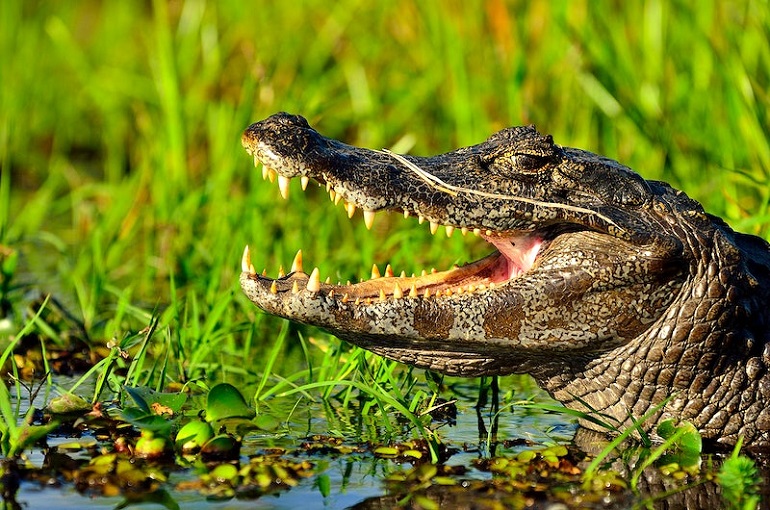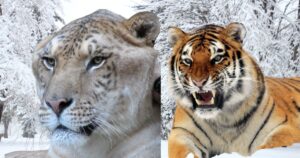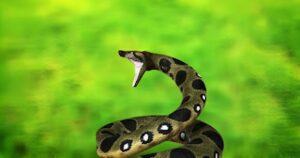When we talk about an animal that hasn’t changed for over 2 million years, that has survived the most adverse of situations and extinctions, and that remains the most flawless and superior of its kind, everything is interesting.
I used to think that crocodilians were just large reptiles that ambush their prey when it approaches the water and eat it.
When you dig a little however, you find a highly complex and advanced animal.
So, after million years of survival and DNA “experience”, these are some incredible things that crocodiles can do:
crocodile facts
(1) They can’t just die out of hunger, because they will slow their metabolism and endure for months.
Additionally, they have been observed using branches as tools, in order to lure birds. This behavior is deliberately done, as it is only observed during spring when the need for the construction of the nest arises.
(2) They can’t just die when they lose a limb because their body prevents the spread of possible diseases and infections and completely heals.
(3) They can’t just freeze to death, even though they’re ectothermic, because they will stick out their nostrils and continue living frozen, for even a week, by adjusting the flow of oxygen in their bodies. It’s called torpor. (only alligators, however)
(4) They can’t just get sick by bacteria found in the environment and food because their immune system is unparalleled. So much so, that scientists want to use it to prolong our lives.
(5) It has been observed that the immune system of crocodilians is extremely advanced. During an experiment, when human blood was exposed to 23 strains of bacteria, it managed to exterminate eight of them, while crocodile blood easily annihilated all 23 strains.
(6) They can’t just miss their prey frequently because they have sensory organs (ISOs) that detect pressure changes in the water.
(7) They can’t just die out of dehydration because they have glands that control the absorption of salt. (Saltwater crocodile)
(8) They can’t just drown when they attempt to swallow their prey because they have evolved an organ (palatal valve) which seals their esophagus and trachea/windpipe to prevent flow of water.
(9) They can run much faster than a human, despite their short legs and flat stature.
(10) They belong to a select few creatures that use natural bacteria to externally pre-digest their food.
(11) Their upper skin is so thick and tough a small caliber pistol bullet will glance off and ricochet if fired at them at a shallow angle.
(12) They kill a great many humans every year in Africa when people go to riversides to collect water.
(13) They have very small brains (smaller than a tiny apple) yet have good memory of prey and enemies and still fool humans quite easily despite our much bigger brains.
(14) Their ability to lie just below the surface of the water with just their nostrils and eyes above water make then very hard to detect and nearly invisible at dawn or dusk.
(15) When they first hatch from their eggs they imprint on the first living creature they see as their “mother”, even if it happens to be a human. From there they will follow their “mother” to get fed and survive. So if you are watching one hatch up close, you might well end up with a new reptilian child!
(16) Wild crocodiles can reach 18 ft in length and are much more aggressive than alligators.
(17) There are very few creatures that can compare to them in nature. Their close counterpart in the oceans are great white sharks, equally ancient and also at the pinnacle of evolution, for a fish.
Bite force
They have the most powerful bite ever measured, 3700 pounds psi. For perspective, you bite into a steak at around 200 pounds psi maximum.
This is, to me, an incredible example of evolution, because a human can hold their jaws shut with one hand.
There was no evolutionary need for such a powerful predator to need jaw opening strength; who or what is likely to hinder their jaws?
Instead, any evolutionary steps refined a jaw structure built solely for huge closing power.
Crocodile
Most crocs will eat around once a week, although they can go up to a year between meals in extremis.
As a result, they can afford to be selective. A croc will lay just below the water, well offshore and invisible but for its eyes, and watch prey animals come to drink.
Because of the hierarchical nature of prey herds, each individual will drink at the same place every time.
The croc will select an individual and observe it every time it comes to drink, memorizing every detail: body position, movements, timing, awareness and reactiveness, the whole process of that individual drinking.
The croc may do this for weeks, possibly changing its target and starting the whole process again if it feels its target is very sensitive to its surroundings.
When it decides to attack, it places itself a couple of feet from the bank, totally submerged, invisible and in the perfect position to attack this specific animal.
Because of the refraction of light through water, it can’t trust its vision, so it is effectively blind when it strikes, and coordinates its attack based entirely on its study and in depth knowledge of how its target moves and reacts. It is nearly 100% successful.
(As you can see, I tossed in an alligator fact. It was too cool to pass.)
When it comes to such a marvel of nature, one can only have awe and admire this evolutionary champion.



